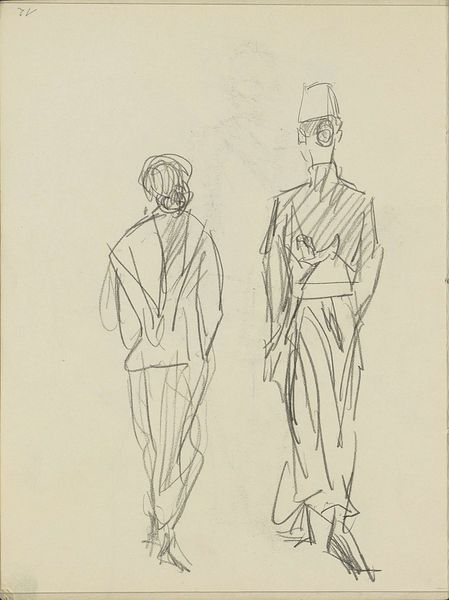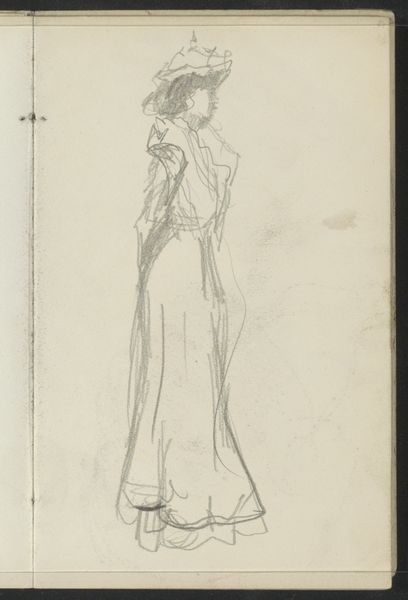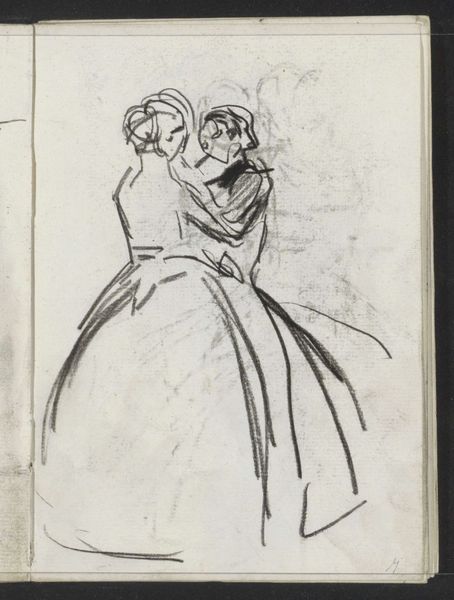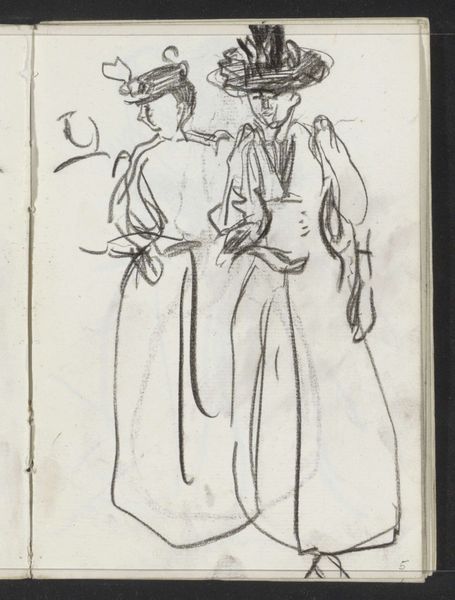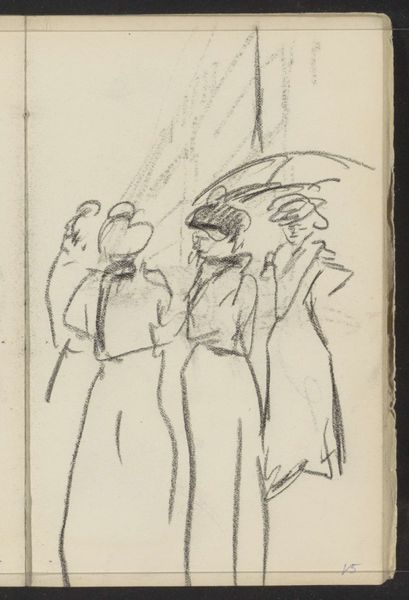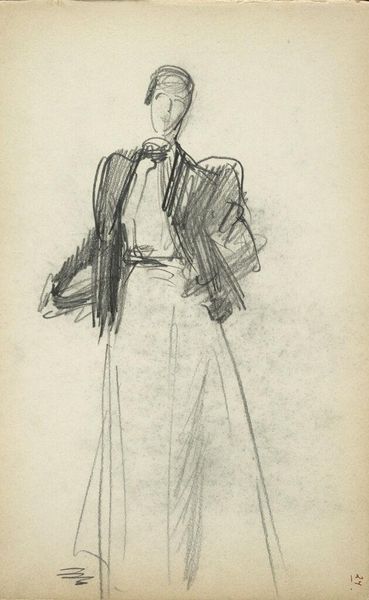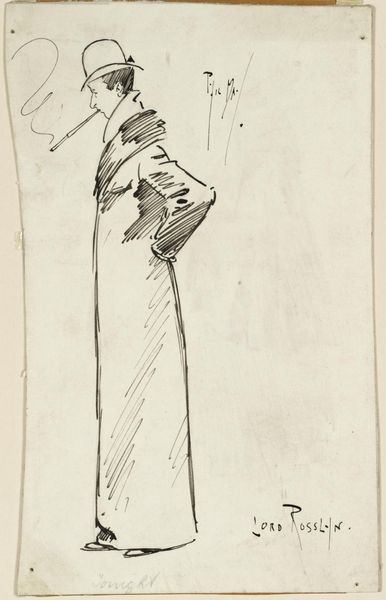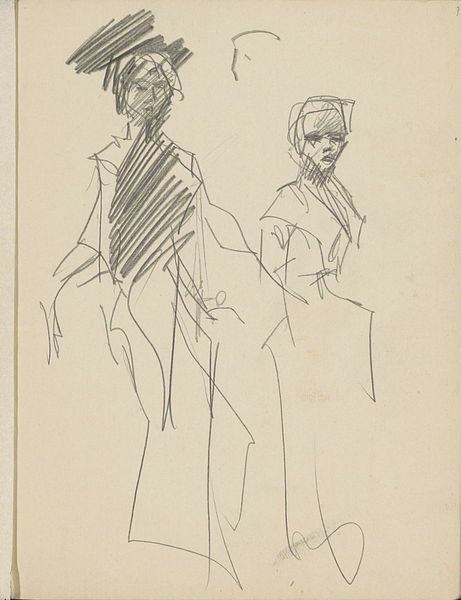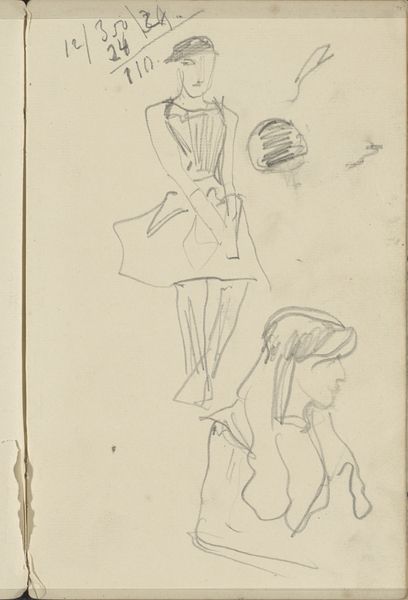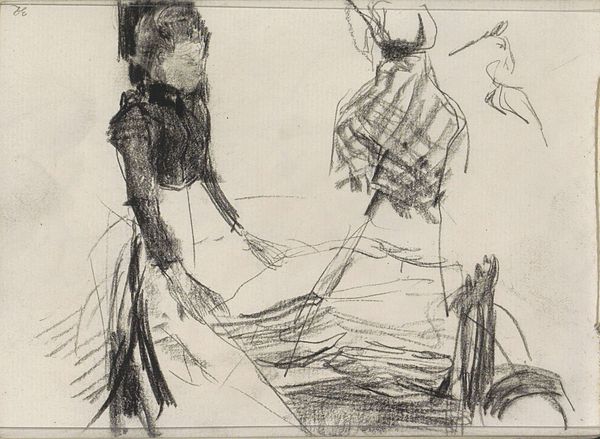
Copyright: Rijks Museum: Open Domain
Editor: This is "Standing Women" by Isaac Israels, created sometime between 1875 and 1934. It's a pencil drawing, and the figures feel so fleeting, almost like a memory. What strikes you about this piece? Curator: What intrigues me is the intimate glimpse into the artistic process. Israels’ sketch, born of Impressionism, begs us to consider the rapidly shifting social roles of women during that era. Are these preliminary sketches for a larger, perhaps never-realized, work? Or do they stand alone as observations of contemporary life? The very incompleteness becomes a powerful statement. What does this ambiguity tell us about the artist's position within that society, regarding their representation? Editor: I hadn’t considered the incompleteness as a statement. I was focusing more on the visual, the lines themselves. It makes me wonder who these women were and if they were aware of being sketched. Curator: Precisely. Their anonymity invites us to project our own understandings of womanhood onto them, colored by historical context. How might their clothing, perhaps indicative of a particular class or social standing, inform your interpretation, keeping in mind the limited autonomy many women experienced at the time? Are they active agents or merely subjects of the artist's gaze? Editor: That reframes my whole understanding! I guess I was appreciating the style without really digging into what it might *mean*. I see now that art can be a reflection of social issues as well as something pretty. Curator: Indeed! By engaging with the artwork's historical backdrop and the societal norms of the time, we unlock richer and more profound meanings. The beautiful sketch is more than it appears to be.
Comments
No comments
Be the first to comment and join the conversation on the ultimate creative platform.
